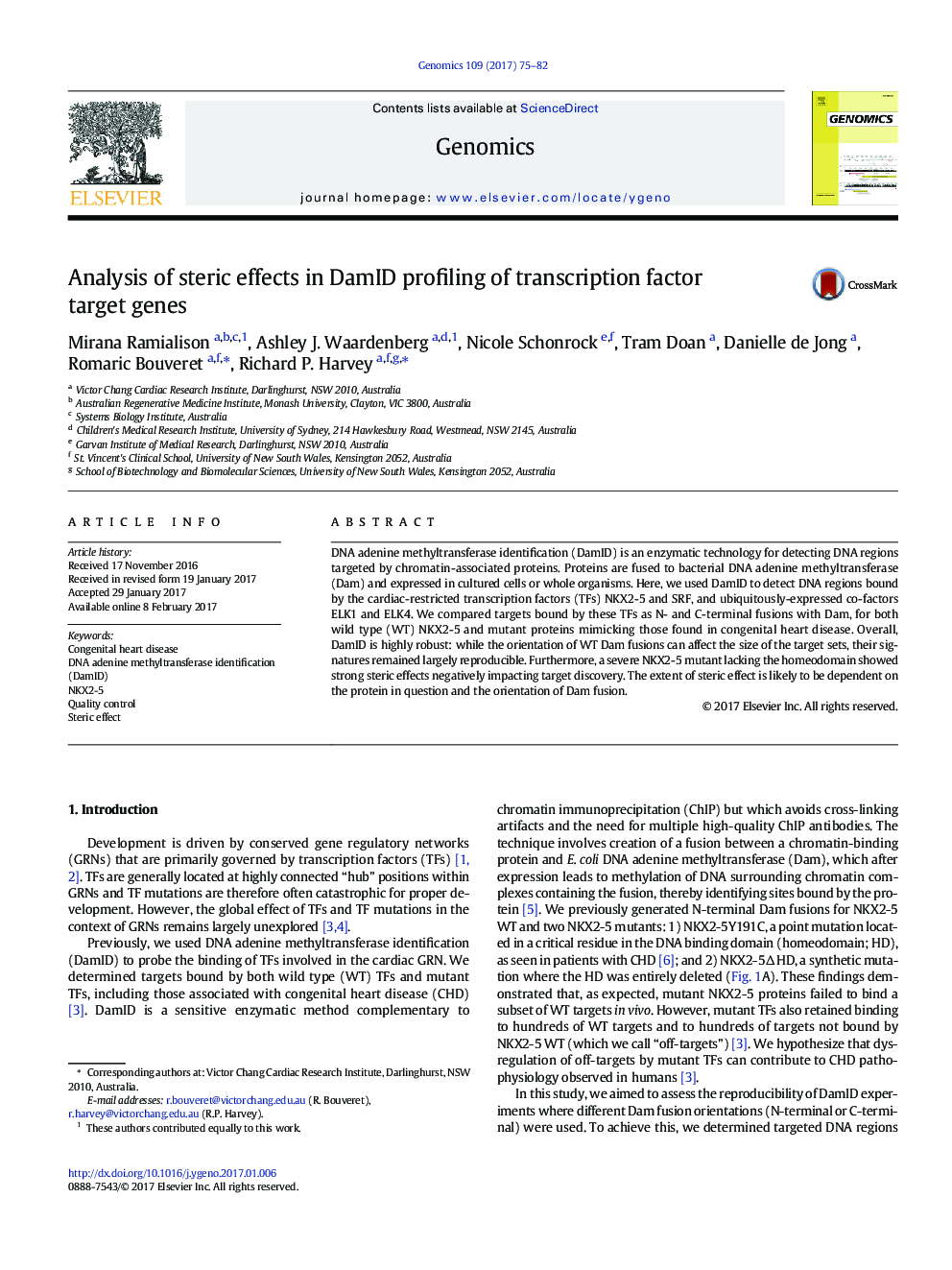| Article ID | Journal | Published Year | Pages | File Type |
|---|---|---|---|---|
| 5590104 | Genomics | 2017 | 8 Pages |
Abstract
DNA adenine methyltransferase identification (DamID) is an enzymatic technology for detecting DNA regions targeted by chromatin-associated proteins. Proteins are fused to bacterial DNA adenine methyltransferase (Dam) and expressed in cultured cells or whole organisms. Here, we used DamID to detect DNA regions bound by the cardiac-restricted transcription factors (TFs) NKX2-5 and SRF, and ubiquitously-expressed co-factors ELK1 and ELK4. We compared targets bound by these TFs as N- and C-terminal fusions with Dam, for both wild type (WT) NKX2-5 and mutant proteins mimicking those found in congenital heart disease. Overall, DamID is highly robust: while the orientation of WT Dam fusions can affect the size of the target sets, their signatures remained largely reproducible. Furthermore, a severe NKX2-5 mutant lacking the homeodomain showed strong steric effects negatively impacting target discovery. The extent of steric effect is likely to be dependent on the protein in question and the orientation of Dam fusion.
Related Topics
Life Sciences
Biochemistry, Genetics and Molecular Biology
Genetics
Authors
Mirana Ramialison, Ashley J. Waardenberg, Nicole Schonrock, Tram Doan, Danielle de Jong, Romaric Bouveret, Richard P. Harvey,
